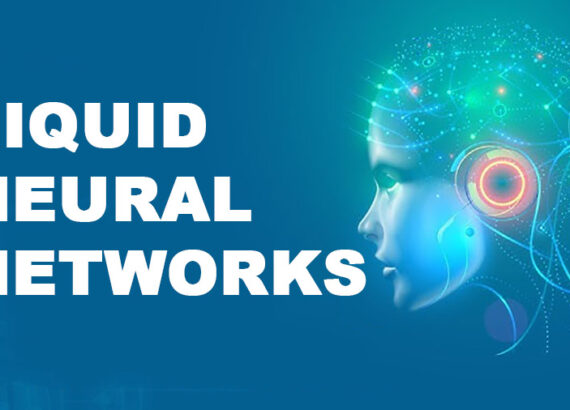Revolutionary AI Technology Sparks Eerie Human-Like Conversations – Are We Safe?
Artificial Intelligence (AI) technology has made significant strides in recent years, with one of the most impressive developments being its ability to engage in eerily human-like conversations. This revolutionary advancement, driven by advancements in natural language processing and machine learning algorithms, has sparked both awe and concern among experts and the general public alike. As AI systems become increasingly capable of engaging in complex and nuanced dialogues, questions arise about their potential implications, ethical considerations, and the overall safety of such technology. This article explores the fascinating world of AI-powered conversations, delves into the implications of this groundbreaking technology, and raises important questions about its safety and the measures needed to ensure its responsible development and deployment.
1. Introduction to Revolutionary AI Technology
What is AI Technology?
Artificial Intelligence, or AI, is a field of computer science that focuses on developing machines that can perform tasks that would typically require human intelligence. It involves creating algorithms and systems that can learn, reason, and make decisions on their own.
Evolution of AI Technology
From simple rule-based systems to more advanced machine learning algorithms and neural networks, researchers and developers have continuously pushed the boundaries of what AI can achieve. Thanks to advancements in computing power and data availability, AI has become more sophisticated and capable of handling complex tasks.
The Rise of Human-Like Conversations
One of the recent breakthroughs in AI is the ability to engage in human-like conversations. Natural Language Processing (NLP) algorithms have significantly improved, allowing AI systems to understand and generate human language with remarkable accuracy. This development has sparked both excitement and concerns about the implications of such technology.
Get up to 70% Discount on Amazon Electronic Products

2. Exploring the Eerie Human-Like Conversations
Understanding Natural Language Processing in AI
It involves techniques such as language modelling, sentiment analysis, and named entity recognition. These algorithms allow AI systems to comprehend and respond to human queries and conversations.
Examples of AI Systems with Human-Like Conversations
Popular examples of AI systems with human-like conversations include virtual assistants like Apple’s Siri, Amazon’s Alexa, and Google Assistant. These AI-powered chatbots can understand and respond to a wide range of user queries, making them capable conversation partners.
Impressive Achievements and Potential Limitations
The advancements in AI technology have led to impressive achievements in human-like conversations. However, there are still limitations to consider. While AI systems can generate coherent responses, they may struggle with understanding context or displaying a true understanding of emotions. Additionally, there are concerns about the potential for malicious use or the spread of misinformation through AI-generated conversations.
3. The Potential of AI Technology and its Implications
Advantages of AI in Various Industries
It can automate repetitive tasks, improve decision-making processes, and enhance efficiency and accuracy. AI-powered customer service chatbots, for example, can provide quick and personalized support to a large number of customers.
Impact on Communication and Customer Service
With the rise of AI-powered conversations, traditional communication channels are evolving. Businesses can now offer efficient and round-the-clock customer support through AI chatbots. However, there is a balance to strike between AI and human interaction, as some customers still prefer the human touch.
Potential Disruption of Traditional Human Roles
As AI technology continues to advance, there is concern about the potential displacement of human workers. Certain jobs, particularly those that involve repetitive tasks, may be at risk of being automated. However, AI also presents opportunities for new jobs and skills to emerge, particularly in areas such as AI development and algorithm oversight.
4. Ethical Concerns and Safety Issues Surrounding AI Development
Ensuring AI Systems Remain Ethical and Unbiased
As AI technology becomes more prominent, it is crucial to address ethical concerns and biases. Developers must ensure that AI systems are programmed to respect privacy, avoid discrimination, and make ethical decisions. This involves careful data handling, transparent algorithms, and ongoing monitoring to identify and rectify any biases or unintended consequences.
Safeguarding Against Misuse of AI Technology
While AI technology offers immense potential, there is also the risk of misuse. It is essential to establish regulations and safeguards to prevent malicious activities, such as the creation of AI-powered bots for spreading misinformation or conducting cyberattacks. Collaboration between policymakers, developers, and users is crucial in developing responsible AI practices.
AI’s Influence on Decision-Making Processes
AI systems are increasingly being used in decision-making processes, such as loan approvals or criminal justice assessments. However, concerns arise regarding transparency, accountability, and potential biases in these algorithms. Striking a balance between the efficiency of AI and maintaining human oversight and accountability is essential to ensure fair and just outcomes.
In conclusion, the revolutionary AI technology that enables human-like conversations brings both excitement and apprehension. While it holds great potential in various industries, there are ethical considerations, safety issues, and concerns about job displacements. As AI continues to evolve, it is crucial to navigate these challenges responsibly to ensure a safe and beneficial integration of AI into our lives. Technology and Ethical Considerations
5. Current Regulations and Guidelines for AI Implementation
Overview of Existing AI Regulations
So, you’ve heard about this revolutionary AI technology that can hold eerie human-like conversations. It’s impressive, no doubt, but it also raises some important questions about safety. How do we regulate the implementation of AI in a way that protects us from potential harm?
Currently, there are some regulations and guidelines in place to govern AI technology. These regulations vary from country to country, with some nations taking a more proactive approach than others. For example, the European Union has introduced the General Data Protection Regulation (GDPR), which addresses data protection and privacy concerns when it comes to AI. Similarly, the United States has issued guidelines on AI ethics and safety through organizations like the National Institute of Standards and Technology (NIST).
Challenges in Regulating AI Technology
Regulating AI technology is no easy task. One of the major challenges is the rapidly evolving nature of AI itself. As technology advances at lightning speed, regulations must be kept up to ensure they are still relevant and effective.
Another challenge is the international aspect of AI development and implementation. With AI being a global phenomenon, it becomes crucial for countries to collaborate and establish international standards. This can help prevent inconsistencies and ensure a cohesive approach to regulating AI on a global scale.
The Need for International Collaboration
To tackle the challenges of regulating AI, international collaboration is essential. Cooperation between countries can help establish common guidelines and standards that promote the safe and ethical use of AI across borders.
By coming together, we can address the concerns surrounding AI technology and ensure that it benefits society as a whole. It’s time for a united front in the face of this technological revolution.
6. Ensuring the Security and Privacy of AI Systems
Protecting Sensitive Data in AI Conversations
When it comes to AI conversations, the security and privacy of sensitive data should be a top priority. AI systems have access to a vast amount of personal information, and protecting that data from unauthorized access or misuse is crucial. Robust encryption methods and secure data storage protocols should be implemented to safeguard sensitive information.
Mitigating Cybersecurity Risks Associated with AI
As with any technological advancement, AI systems are not immune to cybersecurity risks. The more human-like AI conversations become, the more vulnerable they may be to malicious attacks. It’s important to invest in robust cybersecurity measures to prevent unauthorized access, data breaches, and potential misuse of AI technology.
Building Trust in AI Systems
Trust is a crucial element in the widespread adoption of AI technology. To ensure people feel comfortable and confident interacting with AI systems, transparency becomes paramount. Providing clear information about how AI works, its limitations and the data it collects can help build trust and alleviate concerns.
Additionally, involving users in the development and decision-making processes of AI systems can make them more accountable and trustworthy. By making AI technology user-centric, we can foster a sense of collaboration and address any ethical concerns that may arise.
7. Addressing the Fear of Job Displacement and Economic Impact
Analyzing the Potential Impact on the Job Market
One of the biggest fears surrounding AI technology is the potential displacement of jobs. As AI becomes more advanced, there is concern that human jobs may be automated, leading to unemployment and economic instability. However, it’s important to remember that AI technology can also create new job opportunities and enhance existing roles.
Reskilling and Upskilling for the AI Era
To mitigate the impact of job displacement, reskilling and upskilling become crucial. By investing in education and training programs, individuals can acquire the skills needed to adapt to the AI era. This approach can help bridge the gap between existing job roles and the evolving needs of the market, ensuring a smoother transition for workers.
Adapting Economic Policies to AI Advancements
As AI continues to advance, economic policies must evolve alongside it. Governments and policymakers need to anticipate and plan for the economic impact of AI technology. By adapting policies to support the integration of AI in industries, fostering innovation, and ensuring inclusive growth, we can harness the full potential of AI while minimizing negative consequences.
8. The Future of AI Technology and Ethical Considerations
Ethical Considerations in AI Conversations
As AI technology progresses, we must continue to address the ethical considerations that come with human-like conversations. Issues like privacy, bias, and accountability must be taken into account when designing and deploying AI systems. Striking the right balance between technological advancement and ethical responsibility is crucial for the future of AI.
Ensuring AI Benefits Society as a Whole
While AI technology has the potential to revolutionize various industries, it’s important to ensure that its benefits are distributed fairly. The development and implementation of AI should be guided by the principle of serving the greater good. This involves considering the impact on different communities, addressing inequalities, and creating opportunities for everyone to benefit from this transformative technology.
Embracing the Potential of AI Technology
Despite the concerns and challenges surrounding AI technology, it’s important to embrace its potential. AI has the power to improve efficiency, enhance decision-making, and tackle complex problems. By harnessing its capabilities responsibly and with a human-centric approach, we can unlock a future where AI works hand in hand with humans to create a better world.
Conclusion
So, let’s navigate this brave new world of AI with caution, collaboration, and a touch of humour. After all, as humans, we have the power to ensure that AI technology benefits us in ways that are safe, ethical, and beneficial for all. In conclusion, the rise of AI technology and its ability to engage in human-like conversations presents a myriad of possibilities and challenges. While it offers tremendous potential in various industries and improves customer experiences, it also raises ethical concerns, safety issues, and fears of job displacement. As we continue to embrace AI advancements, it becomes imperative to establish robust regulations, prioritize data security and privacy, and invest in reskilling programs to adapt to the changing landscape. By addressing these concerns head-on and working collaboratively, we can harness the power of AI technology while ensuring its safe and beneficial integration into our society.
FAQ
1. Are AI-powered conversations completely indistinguishable from human conversations?
While AI systems have made significant progress in mimicking human conversations, they are not yet completely indistinguishable. Although they can generate responses that sound remarkably human-like, there are still subtle differences that can give them away, such as occasional grammar errors or difficulty understanding the context in certain situations.
2. How can we address the ethical concerns surrounding AI-powered conversations?
Addressing ethical concerns requires a multi-faceted approach. It involves developing AI systems that are transparent, accountable, and free from bias. It also requires establishing clear guidelines and regulations to ensure the responsible use of AI technology. Additionally, ongoing public discourse and collaboration between industry leaders, policymakers, and ethicists are necessary to navigate the ethical challenges associated with AI-powered conversations.
3. Will AI technology lead to widespread job displacement?
While AI technology has the potential to automate certain tasks and job roles, it does not necessarily mean widespread job displacement. Instead, it is more likely to lead to a transformation of job roles, with some tasks being automated and others requiring human skills, creativity, and critical thinking. Reskilling and upskilling programs will be crucial in enabling individuals to adapt to the changing job landscape and take on new roles that AI cannot perform.
4. How can we ensure the safety and security of AI systems in conversations?
Ensuring the safety and security of AI systems in conversations requires implementing robust cyber security measures to protect against data breaches and unauthorized access. Additionally, thorough testing and monitoring of AI systems are necessary to identify and rectify any potential biases, vulnerabilities, or unintended consequences. Continued research and collaboration between experts in AI development and cybersecurity will be vital in mitigating risks and ensuring the integrity and trustworthiness of AI-powered conversations.
Thank you for reading 🙂
Get up to 70% Discount on Amazon Electronic Products
If you want to build your website at an affordable price contact: www.nextr.in
Read this: How To Prepare For A Job Interview


















